
Capturing the Ambiguity : Double Exposure Photography
This camera feature isn't common in other analog cameras, which makes it unique. It adds depth to your photos, blending different scenes in a surprising and artistic way. Expect the Unexpected results!
HOBBIES
asxlm
6/16/20242 min read
Hi. In this post, I am going to share about double exposure photography. Disclaimer: I’m not an expert in this field, but I want to share my experience using double exposure with a 35mm film camera. I've been practicing this technique since 2021 when I first purchased my analog camera.
I often try to capture double exposure pictures using my Pentax Espio 140, and the results always exceed my expectations. This camera features double exposure effects, which may not be available on other Pentax or compact analog cameras. For some cameras like the Holga Lomography, you can overlap more than two pictures in one frame, but with my Espio, the maximum overlap is only two photos per shot. It can be challenging for beginners using an analog camera because you can't see the results instantly.
Personally, I prefer to shoot a lighter picture first as the background or base layer, and then overlay a darker-hued picture as the main focus. Despite not always getting the expected results due to the unpredictable nature of film, the ambiguity often enhances the beauty of the shot, creating fascinating visual interactions.
The double exposure technique utilizes exposure latitude, which affects exposure accuracy, potentially resulting in overexposure or underexposure. This ambiguity adds depth and second meanings to your photos, making them more rewarding visually. For specific metering and settings, you can refer to www.analoguewonderland.co.uk. (here, I cited some of the metering settings from analoguewonderland website)
Correct exposure at shutter speed 1/125 would need to be set to 1/250 for a double exposure (2 exposures, each 1 stop underexposed), and 1/500 for a quadruple exposure (4 exposures, each 2 stops underexposed)
Correct exposure at aperture f8 would need to be changed to f11 for a double exposure (2 exposures, each 1 stop underexposed) and f16 for a quadruple exposure (4 exposures, each 2 stops underexposed).
Overall, double exposure is a rewarding technique for those seeking unconventional results and enjoy experimenting with photography. Happy experimenting!
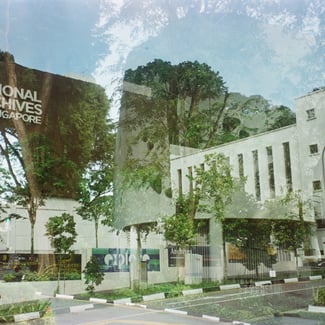
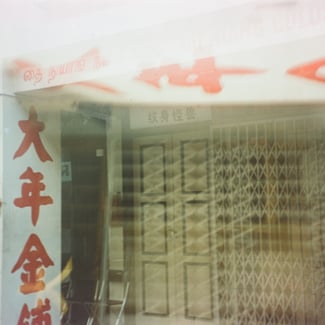
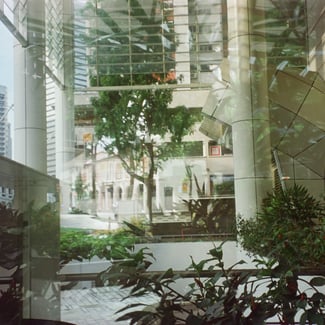

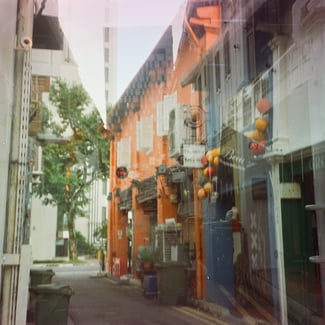
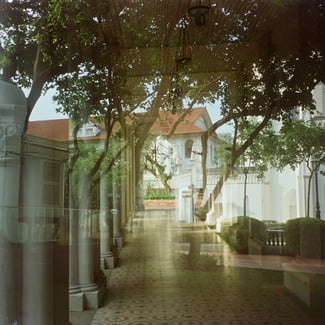
Some shots of double exposure in Chinatown, Singapore
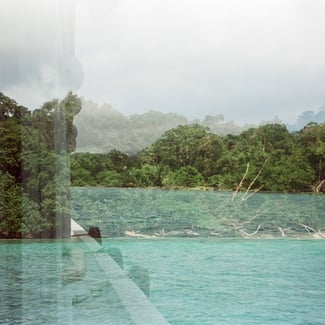
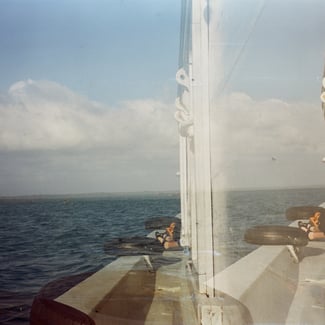
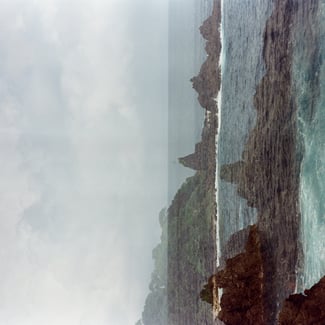
Some shots of double exposure in Ujung Kulon, Indonesia
Tips for double exposure photography using analog camera :
Shoot lighter first, and darker second for the main subject.
Use textures, skies, flowers, or other elements for backgrounds.
For silhouette effects, place your subject against a blank background.
See you on another adventure!



Stay updated with the latest content.
Sign up to get notified about new posts.

Let's be friend!
Share your thoughts or stories, wanderer. He surely will be thrilled to hear your story, whatever it is.
